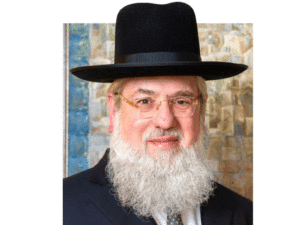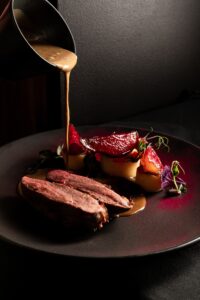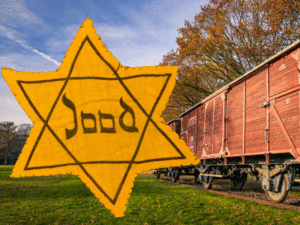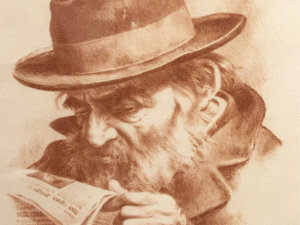Personal Memories by Rabbi Pinchos Lipschutz
I had always heard about him. He was my father’s cousin. They had learned together in Torah Vodaas and Beis Medrash Elyon, inseparable until he chose to move to Eretz Yisroel. They were both named after their grandfather, Rav Yaakov Lipschutz of Kovno, and in their early days together in Torah Vodaas they were given nicknames that stuck with them for the rest of their lives. My father was called Big Jake, he was the taller one, and he was called Little Jake. They were famous in yeshiva for their brilliance, hasmodah and independence. He was amazingly brilliant, I was told, he had a photographic memory, they would say. I was looking forward to the day I would meet him.
When I went to learn in Brisk at the age of 23, I got to meet him. His apartment was not far from the Achva shul, where we learned back then. To get to him, you walked up Strauss and made a left at the corner where the sheirut taxis would wait to fill up and leave to Bnei Brak. His address was Bnei Brit 14, tucked away, his place was hidden unless you knew it was there. Who had a telephone in those days, so I went to his apartment several times until I found him home.
I introduced myself and looked at him. I thought to myself is this the guy I had been hearing about all these years? Geon hageonim? Photographic memory? Little Jake, hero of yeshiva in his day? He was slightly overweight, wearing a jacket which had seen better days, whatever color it was originally, it had turned greenish from years of baking in the sun, besides that it was way too small on him. His pants which didn’t quite match the jacket, were held up by an old leather belt. His beard was straggly and knotted.
The apartment was as bare as could be, there wasn’t room for more than two people in the kitchen, there was a table in the entranceway which served as the dinette and dining room. There were two bedrooms and one nice room where he kept his seforim. Sagging shelves lined with seforim and a table piled with seforim and yarchonim. There was also an enclosed porch, filled with seforim and yarchonim.
We sat at the table, a very old one, with very old chairs and began talking. He didn’t mention a wife, but she suddenly appeared and offered me a drink. And then he began speaking. Every word was measured and intelligent. He recounted things that happened decades prior, as if they took place yesterday. I was so stunned I still remember the conversation. He was telling me about a person he met at a levayeh on the Lower East Side and what the person said that aroused his suspicion. “We were wet, it wasn’t raining, it was a misty day, it was 50 degrees out and fine mist was coming down. I stood next to him and this is what he said…” I was amazed at his memory and his ability to paint the scene for me.
I went on to visit and spend time with him often during my four year stay in Yerushalayim. He was a literal fountain of information. There was nothing he didn’t know. He could cite and quote verbatim not only gemaros, rashis, tosefos, rishonim and achronim, but also little known yarchonim. He loved yarchonim, he would pick them out of sheimos, look through them, and remember them forever. He would also submit shtiklach torah to yarchonim. Everything he said was matter of fact, he never bragged, but when you spoke to him you knew you were talking to a special person. When he said over a shtikel Torah he face would light up and when he finished the thought a smile would break out on his face. That was his geshmak in life and from which he derived the most pleasure.
He worked for Machon Harry Fishel and on The Talmudic Encyclopedia. In the pre-computer days, he was like a computer. People working on seforim in the machon, would turn to him for marei mekomos and guidance in subjects not often studied or fully understood.
He once related how he got the job. He was interviewed by Rav Shlomo Zevin, who presented him with a difficult question on a Kodshim topic. “So, I didn’t tell him the rashi, from which there is a diyuk to arrive at the proper response. Neither did I tell him the Tosefos, from which a solution can be derived. He was probably expecting that. I told him an answer from the Teshuva sefer Yeshuos Malko of Rav Sheialeh of Kutna. He looked at me quizzically and said how in the world did you know that? I told him I had once seen it when I was learning maseches kiddushin.” He got the job on the spot.
Still as a bochur, he would save up and buy old seforim. But he didn’t buy them to collect them, he bought them to learn from. In those days it was thought that it was a waste to print seforim because nobody would buy them. So, he bought old ones, which were printed before the war, and would learn from them. When the sefer was finally reprinted the yeshiva would buy it and he would learn from the new copy. He found it much easier to learn from a new sefer. He would then give away the old one, even though it was valuable to seforim collectors. Money wasn’t important to him, Torah was, and he expended every effort to learn and hureveh in learning.
One Purim in Beis Medrash Elyon he was so drunk that he could not get off the floor. A crowd gathered around him and he repeated shiurim of the rosh yeshiva Rav Reuvein Grozovky, one after the other. His essence was Torah.
His apartment was situated between the neighborhoods of Geulah and Meah Shearim, for certain tefillos he would go to the shtiblach of Meah Shearim and for others to Zichron Moshe. He would take his place on a bench, alongside the born and bred Yerushalayimers. He fit right in with the secret holy men of the holy city, whose simple, outside appearance belied their greatness.
He would come to Achvah shul to say Selichos, because they would say them by night. I was speaking to him afterwards and someone asked me why I was always talking to shleppers. I didn’t tell him that I found them charming. I told him this guy is no shlepper, he looks like one because he cares about nothing outside of Torah. He didn’t believe me. “Go ahead, test him,” I said, ask him anything in Shas and you’ll see. Since the mesechtos studied in Brisk are from seder Kodshim, the fellow struck up a conversation with him on a sugya in Zevochim. He was astounded that “the shlepper” was familiar with everything related to the sugya, including every Brisker shtikel Torah on the topic.
“How come I never heard of him?” he asked. He was from a different generation. His life centered on Torah. He had no interests outside of Torah. His friends were tanoim, amoraim, rishonim and achronim, he had no social life outside of them and didn’t feel that he was lacking anything. He didn’t care what people thought of him. He understood people. He understood politics. He understood music. He had an organized mind, and everything was clear to him and filed away in a place where he could easily recall it. He was able to explain anything to anyone. His preferred mode of communication was writing, and when he wasn’t learning Torah, he was writing Torah.
He sought no kavod, no one knew who he was, but his name was well recognized from the seforim he wrote and worked on. He would correspond with the Steipler in learning. The Steipler would ask him to come to Bnei Brak so he could speak to the hidden gaon from Yerushalayim who corresponds with him. He was afraid that the Steipler would be let down upon meeting him and constantly pushed off going. My father, who shared the same name, went to the Steipler during one of his visits to Eretz Yisroel, and when he said his name, the Steipler became excited and hugged and kissed him, thinking he was the Yaakov Lipschutz from Yerushalayim he wanted to meet.
The amount of Torah that he learned can be attributed to the mesirus nefesh of his father, a simple Litvishe Yid who was a shul shammes. But from that he couldn’t afford to pay tuition for his son to learn in yeshiva. He was moser nefesh and sought out a job working for the city. As he was illiterate, he was given a job to sweep streets. And every day he happily went off to work, using his wages to pay tuition in Torah Vodaas so that his ben yochid would grow to be a talmid chochom. It was people like him who enabled Torah to develop on these shores.
The ‘hasagos of ah muhl’ enabled a ‘gaon from ah muhl’ to grow and flourish.








